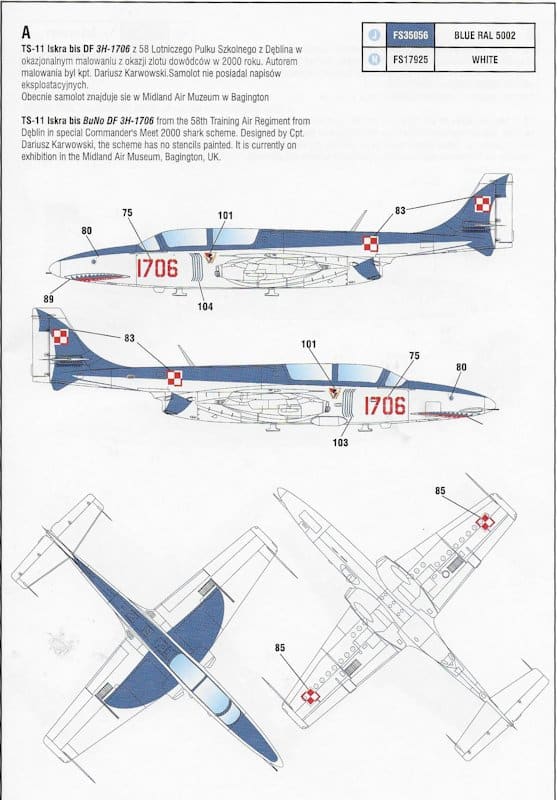Arma Hobby 1/72 TS-11 Iskra Deluxe Set Review
Prototype: The PZL TS-11 Iskra (Polish: Funke) is a jet trainer that was developed and built by the PZL Mielec in the late 1950s as a replacement for the MiG-15UTI for basic training for pilots in the Warsaw Treaty armies.
The second of a total of four prototypes took off on February 5, 1960, with test pilot Andrzej Abramowicz on the stick for its maiden flight. The Armstrong Siddeley Viper-8 engine used here later replaced the more modern and more powerful Polish SO-1. On September 11, 1960, the TS-11 was in? Ód? the air show taking place.
In the autumn of 1961, the model was compared to the competition designs Jak-30 and Aero L-29 in the USSR. The dolphin emerged from the competition as the winner. Poland refused and stuck to its model. The first series of machines were delivered to the Polish Air Force in spring 1964, where they replaced the TS-8 Bies in 1965/66.
A few Iskra up to A followed in 1966 a larger batch with SO-1 engines than Iskra up to B (or Iskra 100). This had four instead of two underwing stations for external loads. From 1969 onwards, weapon containers could also be installed with SO-3 engines with longer service life used. In 1972, five single-seat Iskra to C reconnaissance aircraft (also Iskra 200.
Production ended in 1979. India was the only export customer to buy 50 copies of the D version, which were delivered between October 1975 and May 1976. From 1982 to 1987 another series of 45 aircraft was built, these had the version designation DF. 30 planes were still flying in Poland in 2013. India put its Iskra out of service at the end of 2004.
Kit: The TS-11 “Iskra” is the first injection molded product from Arma Hobby from Warsaw. This delivers the newcomer as a DELUX set. The box contains four gray injection molded parts each for two Iskra models, two frames with glass parts, resin ejection seats and wheels, etched parts, and airbrush masks. Slimmed-down (fewer etched parts, no resin) individual issues should follow.
The 70 parts are largely sprayed clean, there are a few sink points. In terms of quality and detail, they correspond to e.g. from Hobby Zero.
There are lots of resin and etched parts for the cockpit. If you want to work here, you should take a close look at the somewhat confusing assembly instructions, because the options, e.g. for the ejection seats are on different sides.
If you follow the instructions, you will find the alternative suggestions for the parts of the second circuit board, for some inexplicable reason, only after assembly at the end of the instructions. A part from the nose gear bay is only available in the deluxe edition!
The pulpit can be glued in the open or closed position.
Painting options: The decal message, printed without offset, contains maintenance instructions and deco options for six Polish machines.
Color specifications are in Federal Standard. There are masks for the cockpit and wheels.
Conclusion: Finally a contemporary TS-11. The DELUX edition is something for Iskra fans and certainly the Polish audience. All other interested parties should definitely use one of the following kits.
Available in many stores and online at hobbyzero.com















